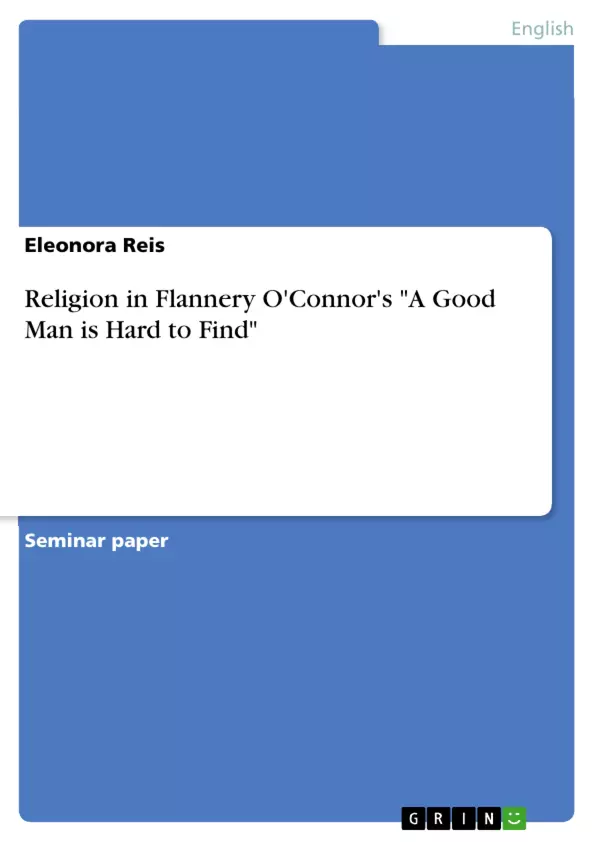At first sight “A Good Man Is Hard to Find” by Flannery O`Connor just appears like a grotesque story because it begins with a happy family trip and ends with a conversation about Jesus and six murders. But if the story is read under the aspect of religion, it has indeed got a deeper meaning. The fact that the author herself was a very religious woman, as will be obvious from her biography, and that religion appears in all of her works, shows that this short story can only be interpreted with the focus on religion.
Table of Contents
- Introduction
- Main Part
- Flannery O'Connor's Biography
- Summary of the Short Story
- Character Analysis
- Bailey
- The Children's Mother
- June Star and John Wesley
- The Grandmother
- The Misfit
- Religion in "A Good Man Is Hard to Find"
- The Jesus-Question
- The Misfit's Sense of Injustice and the Amnesia of His Crimes
- The Grandmother's Adoption of the Misfit and Her “Moment of Grace”
- The Author's Style
- Foreshadowings
- Symbolism
- Irony, Humour and the Grotesque
- Point of View and Narrator
Objectives and Key Themes
This essay examines Flannery O'Connor's short story "A Good Man Is Hard to Find" through the lens of religion. It explores the story's deeper meaning beyond its initial appearance as a grotesque tale of a family trip that ends tragically. By analyzing the story's characters, plot, and stylistic elements, the essay aims to understand how religion shapes the story's meaning and O'Connor's overall artistic vision.- The role of religion in shaping character motivations and actions
- The interplay of faith and violence in the story
- The concept of grace and its implications for understanding the characters
- The use of Southern Gothic elements to explore religious themes
- O'Connor's stylistic techniques in conveying her religious message
Chapter Summaries
The essay begins with an introduction that contextualizes "A Good Man Is Hard to Find" as a story rich in religious significance. It explores O'Connor's life and her deep connection to the Catholic faith, which strongly influenced her writing.
The main part of the essay dives into an analysis of the short story. It provides a summary of the plot, highlighting the family's trip to Florida and the encounter with the Misfit. The essay then delves into a character analysis, focusing on the motivations and perspectives of each character, particularly the grandmother and the Misfit. The essay examines how their religious views shape their interactions and understanding of the world.
The essay further explores the religious themes present in the story, focusing on the "Jesus-question" and the Misfit's sense of injustice. It also examines the grandmother's "moment of grace" in the face of her own mortality and the encounter with the Misfit.
Finally, the essay examines the stylistic elements that contribute to the story's religious significance. It analyzes the use of foreshadowings, symbolism, irony, humor, and the grotesque, highlighting how these elements enhance the story's impact and meaning.
Keywords
Flannery O'Connor, "A Good Man Is Hard to Find," Southern Gothic, religion, faith, violence, grace, character analysis, The Misfit, the grandmother, "Jesus-question," stylistic techniques, irony, symbolism, humor, grotesque.- Quote paper
- Eleonora Reis (Author), 2006, Religion in Flannery O'Connor's "A Good Man is Hard to Find", Munich, GRIN Verlag, https://www.grin.com/document/125887



